26 Types of Sushi for an Authentic Japanese Meal
Author: Anne Cowart | Editor: Omar Alonso
Review & Research: Jen Worst & Chris Miller
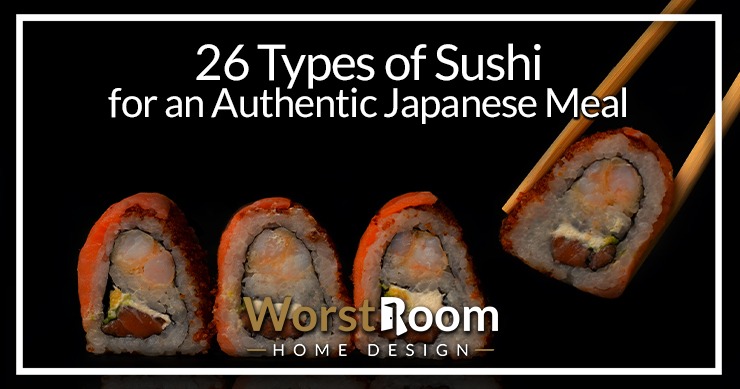
Sushi is a delicious Japanese dish that typically involves a combination of rice, usually raw seafood and other vegetables. There are, however, several types of sushi that can involve much different ingredients and flavors.
26 Types of Sushi
Note that sushi is different from sashimi, which is basically raw fish or meat served in the form of thin bite-sized slices. Sashimi doesn’t include any rice. You can take a look at some of the different types of sushi and what they include below.
Take note that any mention of sushi rice can be replaced with a suitable sushi rice substitute, as well, if making it at home, though you're unlikely to encounter it at a restaurant or with takeout.
Kakinohazushi
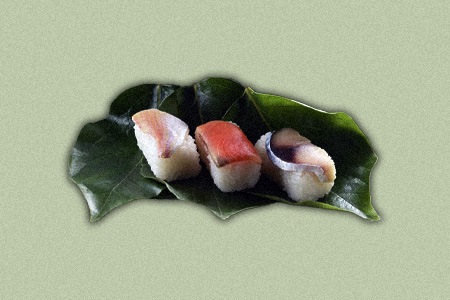
Nara prefecture in Japan is known for this kind of sushi, although several other Kansai regions offer it too. It refers to persimmon leaf sushi, with the sushi coming covered up in a persimmon leaf. The rice is prepared with vinegar and topped with mackerel or salmon, although some also offer other kinds of seafood.
Rainbow Roll
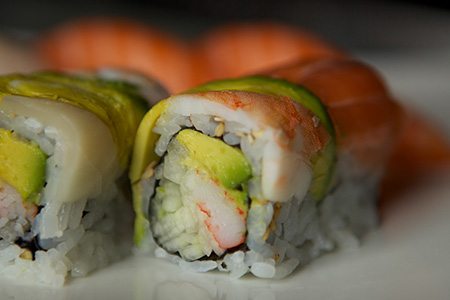
Among all types of sushi, rainbow rolls are among the few varieties that were invented in the United States in Little Tokyo in Los Angeles, California. Apart from the vinegared rice, this sushi roll includes avocado, cucumber, crab sticks, raw tuna, salmon and shrimp, making the roll appear colorful, thus earning it its name. It can have several variants too, involving mango, yellowtail, tempura with various types of shrimp, and more.
Iwakunizushi
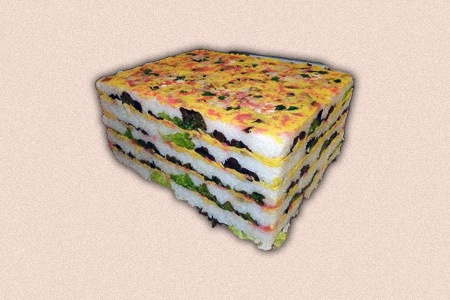
Iwakuni is a city in Yamaguchi prefecture in Japan that has birthed this kind of sushi. Instead of the usual cylindrical and singular piece of sushi, this involves a cake-like structure with multiple layers of rice, each having layers of raw seafood, mushrooms, lotus roots, various types of eggs, and some fried seafood in between.
Oshizushi
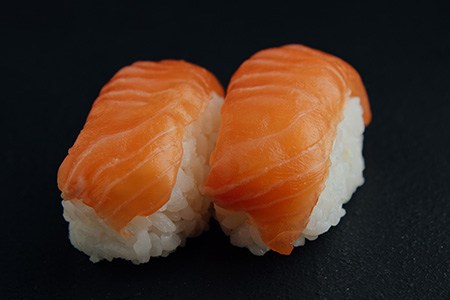
Oshizushi is a kind of pressed sushi made using a special mold or box. This originated nearly four centuries ago in Osaka and involves pressed layers of vinegared rice and eel or mackerel, although modern varieties include other kinds of seafood too. This sushi is usually rectangular in shape.
Spider Roll
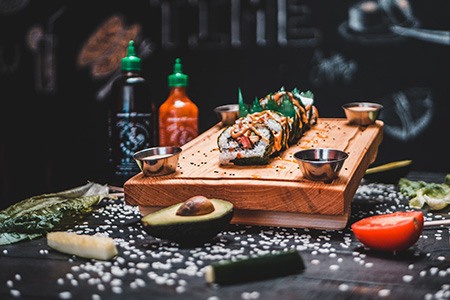
Spider rolls are another North American sushi variety. They include sushi rice along with soft-shell crab, avocado, cucumber, mayonnaise and occasionally some sprouts. Usually, the crab’s legs tend to jut out from the roll, which is why these types of sushi rolls are called spider rolls. They can also have other variants and ingredients.
Uramaki
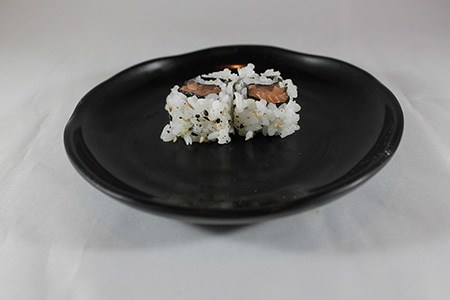
Uramaki, among the many different kinds of sushi, is actually also a Western invention. These sushi varieties refer to inside-out rolls, having an outer layer of rice and an inner layer of seafood. Several kinds of fillings are used here, such as crab meat, avocado, tuna, carrots, mayonnaise and nori (seaweed). The outer layer involves sushi rice, sometimes with seeds.
Inarizushi
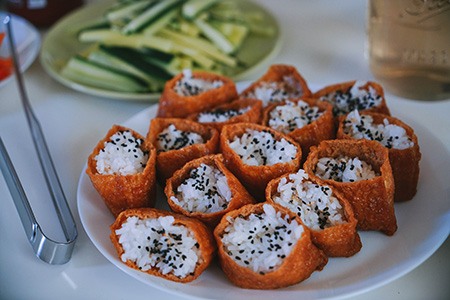
Inarizushi involves a combination of sushi rice and fried tofu. Usually, this involves frying the tofu and shaping them into pockets or pouches, with the sushi rice placed inside these pockets. You can either have them alone or add them to some broth. Historically and traditionally, these served as offerings to the gods.
Gunkan Maki
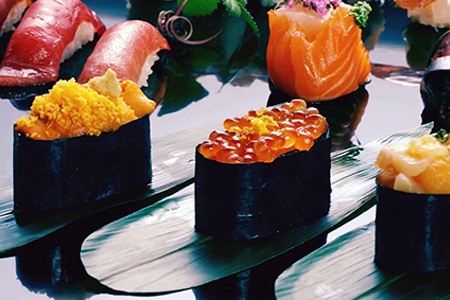
Gunkan Maki sushi refers to boat or ship-like sushi rolls. Among all the different sushi, these have the most unique appearance, I think. These involve wrapping rice in seaweed and topping the rice with other ingredients, such as salmon, fish roe or caviar. It can also include other ingredients like cucumber and avocado. This sushi was invented in 1941 at a restaurant called Ginza Kuybey.
Nigirizushi
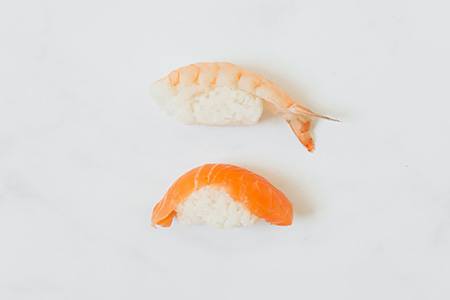
Nigiri sushi is shaped using one’s hands. It involves shaping some sushi rice into an oval mound and placing a slice of raw fish on top. This usually involves salmon or tuna, although some other ingredients such as eel, octopus, seaweed, eggs and more can also be added.
Sasazushi
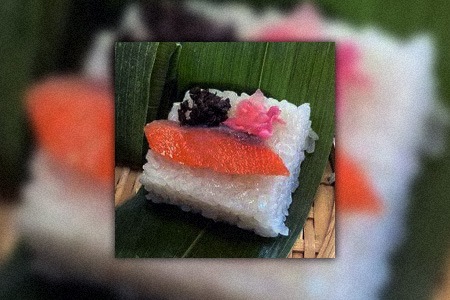
Sasazushi is a kind of sushi that involves wrapping the sushi into bamboo leaves. The sushi itself tends to include a combination of sushi rice, toppings and condiments that can vary. These include eggs, salmon, bamboo shoots, carrots, flakes, walnuts, sprouts and more, with variations possible depending on locations and preferences.
Ikura
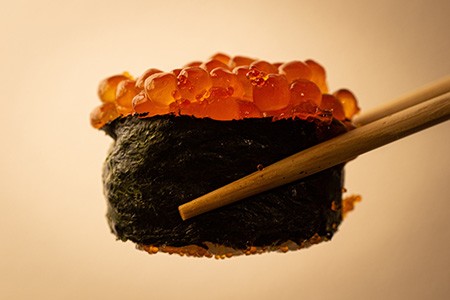
Ikura refers to salmon roe or red caviar. These small eggs are usually added as the primary toppings to the sushi that is made using sushi rice wrapped in seaweed. Often, other ingredients like salmon slices, soy sauce, eggs and cucumber can also be added to enhance the flavor to these types of sushi.
Philadelphia Roll
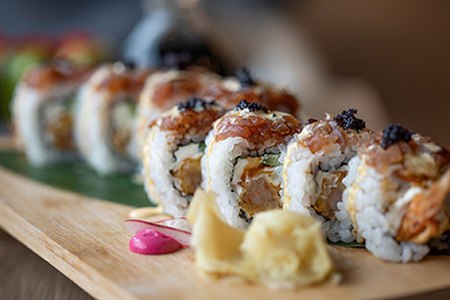
Philadelphia roll is a North American sushi variant that you probably won’t find at all in Japan. It makes use of smoked salmon, cucumber, cream cheese, avocado, sesame seeds and more, many of which can vary based on where you buy and eat them. These toppings are usually topped on sushi rice or placed inside it.
Temaki
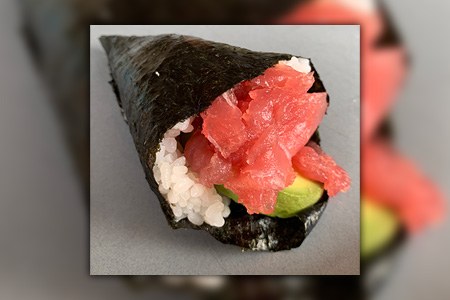
Temaki sushi is also referred to as a hand roll given that you roll it into a conical shape using your hands. It involves combining the sushi or vinegared rice with some other ingredients such as shrimp, yellowtail, salmon roe, tuna, salmon, carrots, cucumber and other relevant ingredients and wrapping them in nori or seaweed, and sometimes topping them with various types of garnish sauces.
Sugatazushi
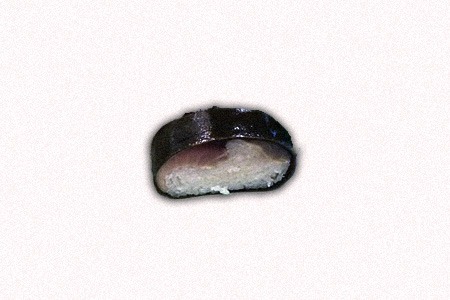
Sugatazushi is quite a unique and rare type of sushi that certain regions of Japan offer during the harvest and other associated festivals in the months of fall. This sushi requires soaking the entire fish (after deboning and slicing a few parts) in vinegar or brine for a few hours, combining it with rice and slicing it up.
California Roll
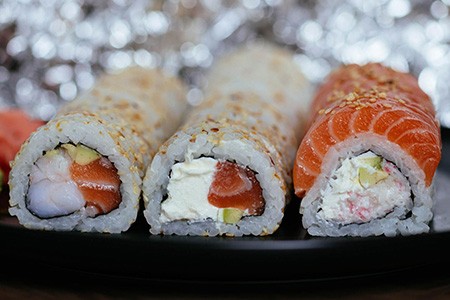
A California roll involves adding the fillings in the middle and wrapping them inside the sushi rice. The rice is then usually topped with some roe or sesame seeds. The ingredients or fillings in these sushi varieties can vary, usually including cucumber, carrots, crab, avocado, salmon, seaweed, mayonnaise and others.
Dragon Roll
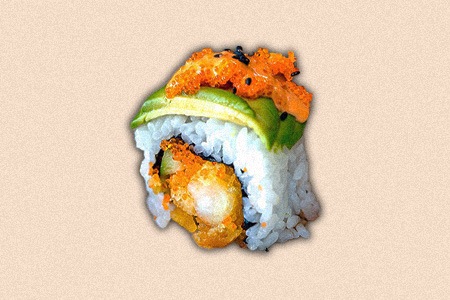
This is another kind of inside-out sushi that is a Western variant and development. It involves combining ingredients like shrimp tempura, cucumber, avocado, crab meat, eel, carrots and other variations into seaweed, which is then wrapped in rice.
Cucumber or avocado is added to the top and the pieces are arranged together to look like dragon scales or tails.
Chirashizushi
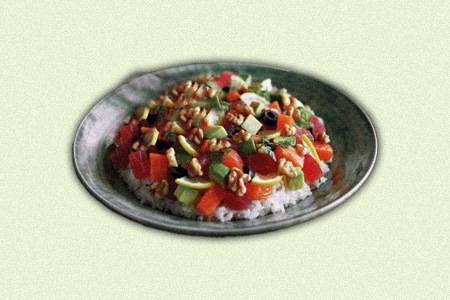
These types of sushi are called scattered sushi because the ingredients aren’t combined into a roll but into a bowl. These ingredients can include sushi rice, cucumbers, shrimp, crab, salmon, lotus roots, snow peas, salmon roe, soy sauce, carrots, burdock roots, eggs, octopus and more, often in variations. People usually eat them during festivals and celebrations in Japan.
Saba
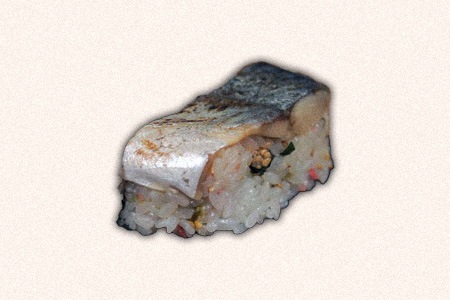
Saba is a kind of mackerel that is popular in Japan and is also called blue mackerel. This kind of sushi involves highlighting the mackerel and soaking it in vinegar for a few hours before topping it on sushi rice. Salt and sugar can sometimes be added to improve the taste.
Uni

Uni refers to sea urchin. It involves taking the edible meat of the sea urchin along with their eggs or roe and cooking them or soaking them. These are then topped over some sushi rice, with certain other condiments and ingredients added to enhance the sushi flavors. These variations can depend on where you’re eating the sushi.
Kampachi
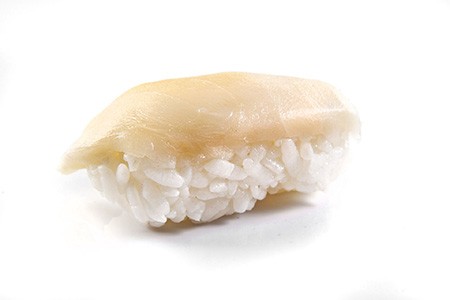
Kampachi is the amberjack fish. This kind of sushi includes taking a thin slice of the amberjack and topping it over an oval mound of sushi rice. These varieties of sushi are quite popular in restaurants and izakaya's in Japan. Some modern variations of this sushi can also include other ingredients.
Akami
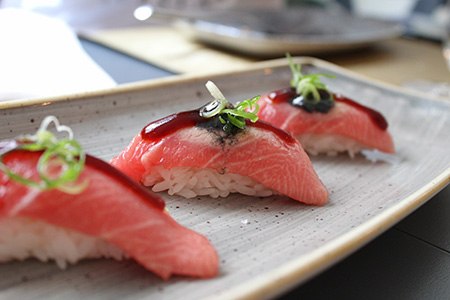
Akami refers to the lean meat of tuna. This ingredient is extremely popular when it comes to making sushi and is a popular dish you’ll find in several places in Japan. The lean meat is sliced and sometimes cured. The sushi rice is rolled up into a ball and topped with this meat.
Tako
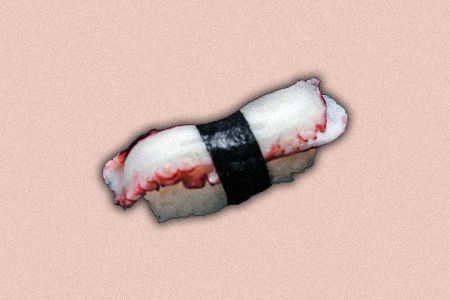
Tako is the Japanese word for octopus, with tako sushi highlighting the octopus. There are various octopus types popular in Japan, so this sushi can involve any of these. The meat from the octopus is taken and cured, cooked or fried and then topped onto the sushi rice.
Spicy Tuna Roll
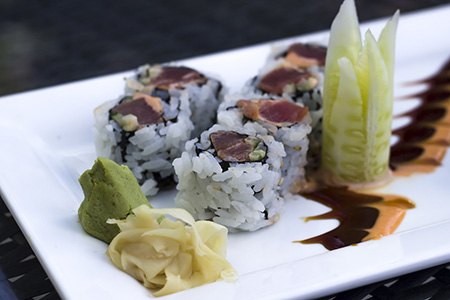
A spicy tuna roll, a Western sushi invention, makes use of raw tuna. Invented in Los Angeles in the state of California, these types of sushi combine sushi rice rolled together with seaweed. Sometimes, roe, sriracha and mayonnaise are also added to the center. The roll is then topped with tuna.
Narezushi
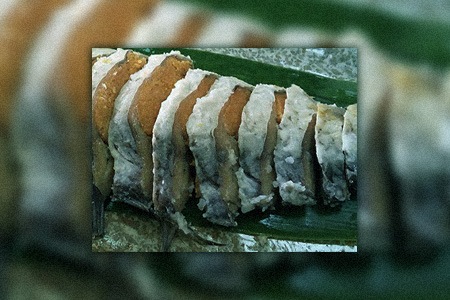
This kind of sushi is where it all began! This was the earliest kind of sushi in Japan and is still widely eaten. It involves salmon, tuna or sweetfish, among other seafood. It is combined with rice and kept aside to ferment and then eaten.
Makizushi
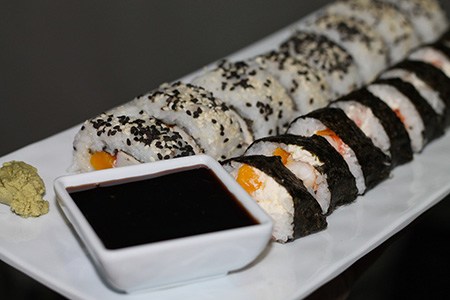
Makizushi is basically rolled sushi and is quite similar to the Korean dish gimbap. It involves combining the ingredients together (raw fish, cucumber, carrots, roe, egg, and others) and wrapping them in rice and seaweed using a bamboo mat. These varieties of sushi are many, and the main feature is that they are rolled.
Temari
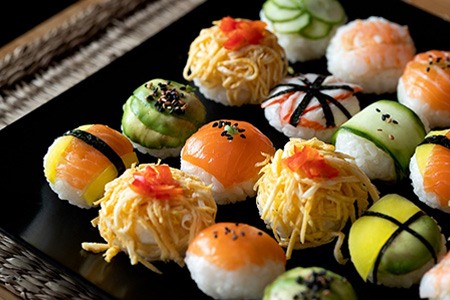
Temari sushi involves taking any raw fish slice and combining it with sushi rice, carrots, cucumber, roe, lotus root, crab sticks and more. These are then all rolled up into a ball. These sushi flavors are simple compared to others, but it's the depth within the flavors that makes these so delicious.
Types of Sushi to Refine Your Knowledge & Taste
Those were some of the different kinds of sushi you can typically find. If there are some that have piqued your interest, it’s time to try them out! Some different types of sushi might not suit your tastes while some might become sushi staples, so if you’re a sushi lover or even an amateur, you should definitely take a bite and see how it goes.




